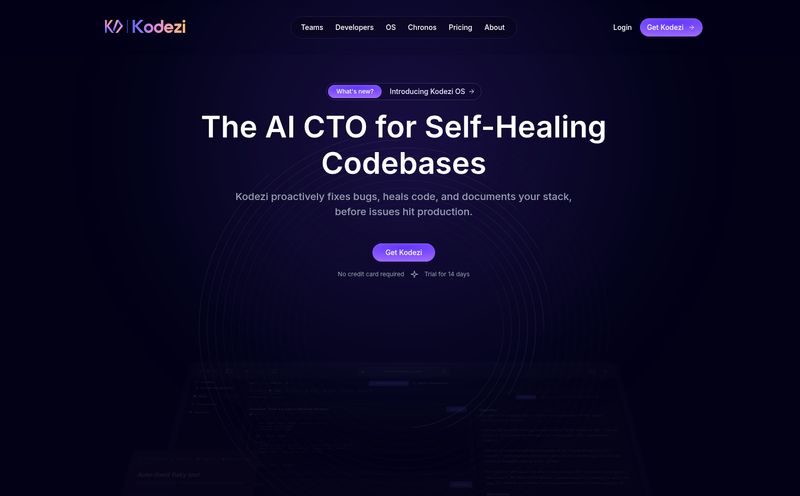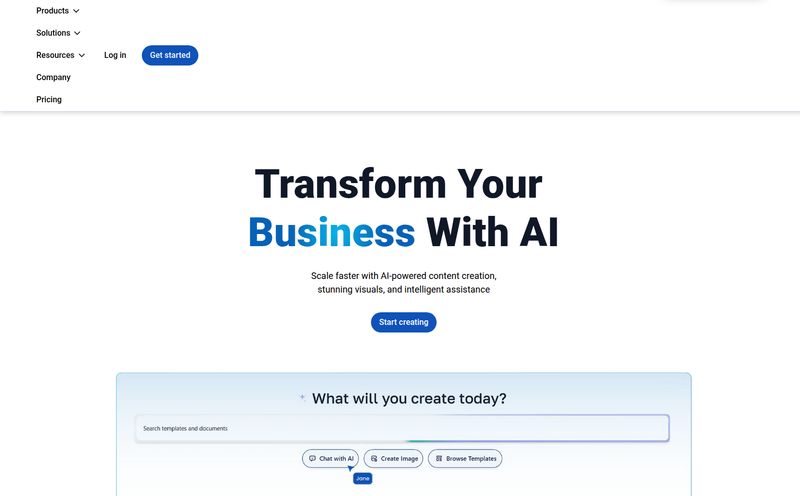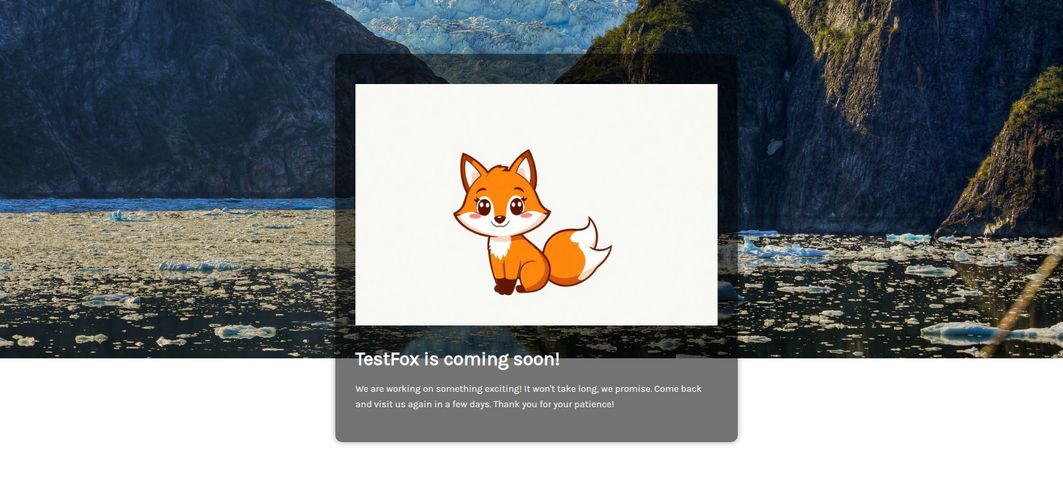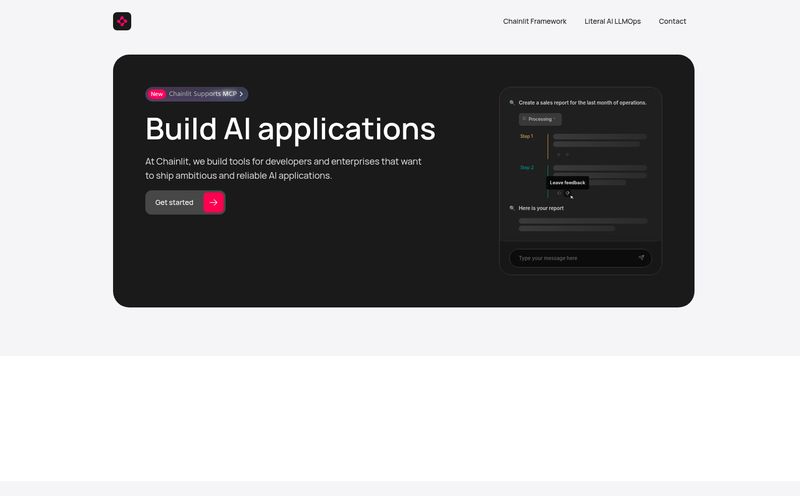I stumble across new dev tools all the time. It’s part of the job, right? You’re constantly on the lookout for that one magic bullet that’ll shave a few hours off a project. Most are forgettable. Some are interesting. And a very, very few make you stop and say, “Huh. Now that’s an idea.”
Quick Snack was one of the latter. When I first saw it, the pitch was just… chef’s kiss. Build React Native apps by just talking to an AI. No more tedious boilerplate, no more wrestling with CSS-in-JS for the umpteenth time. Just a conversation. It sounded like the future we were all promised.
But here’s the thing about the future. Sometimes it flickers. I went to check on the project recently, and poof. The page is gone. A ghost. The project is officially, as the creator noted, no longer under active development. And while that might sound like a sad end, I actually think it makes the story of Quick Snack even more compelling. It’s a perfect little time capsule of the dreams and the harsh realities of building with AI right now.
So, What Was Quick Snack Even Supposed to Be?
At its heart, Quick Snack was a clever, if “hacky” (the creator’s own wonderful word), mashup of two powerful concepts. It took the conversational power of a Large Language Model—specifically GPT-4o-mini in most cases—and plugged it directly into Expo Snack. If you’ve never used Expo Snack, it’s a brilliant in-browser tool that lets you run and share React Native projects instantly. No complex local setup, just code and go.
Quick Snack’s goal was to replace the “code” part with a chat window. You’d type something like, “Make me a screen with a title that says ‘Welcome!’ and a bright red button below it that says ‘Click Me’,” and the AI would generate the React Native code and pop it right into the Expo Snack instance. You could see your changes, live, as you described them. It was aiming to be a coding partner, a lightning-fast prototyper.
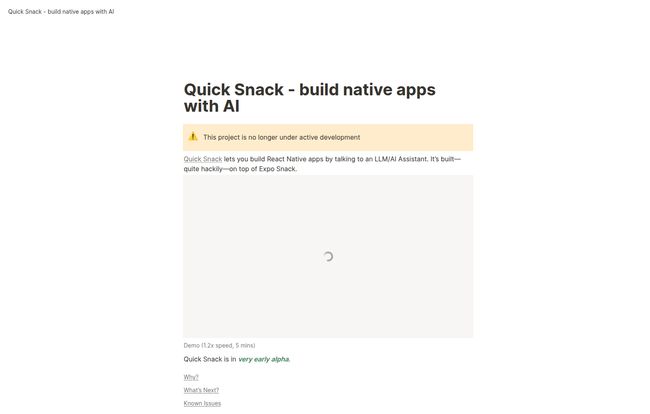
Visit Quick Snack
The Pain Point It Tried to Solve
The creator, Tini Aljnsø, hit on a truth that every mobile developer knows deep in their bones: building user interfaces can be a grind. Especially in the early stages of a project, when ideas are flying and changing every five minutes. You build a screen, show it to the client, and they say, “Can we just move this here? And make that blue?” And you go back and tweak and re-compile. It’s a cycle.
Aljnsø noted that for web dev, tools like v0 and Claude Artifacts were already making strides in AI-assisted UI generation. But the native mobile world? It was lagging behind. Quick Snack was a shot at closing that gap.
The Glimmer of Genius in the Idea
Even as a short-lived experiment, Quick Snack got a few things brilliantly right. The very concept of leveraging an established, solid platform like Expo Snack was smart. Why reinvent the wheel for the live preview and environment when a great one already exists? This let the project focus purely on the AI interaction layer.
More than that, it lowered the barrier to entry. Imagine a designer who has a clear vision for a UI but can’t write React Native code. A tool like this could empower them to build a functional prototype themselves. It truly felt like a step toward democratizing app development. The potential to speed up the prototyping phase was immense. You could iterate on ideas at the speed of thought, or at least at the speed of typing a sentence.
The Reality Check: The Hurdles of an Alpha Project
Of course, this was a “very early alpha,” and it came with a list of “Known Issues” that are almost painfully relatable for anyone who’s tinkered with LLM APIs. This is where the rubber meets the road, and honestly, I appreciate the transparency.
The AI could be, in the creator’s words, “kinda dumb.” We’ve all been there. You ask the AI for one thing, and it gives you something completely different, forcing you to send follow-up messages to nudge it in the right direction. It's less of a genius co-pilot and more of a slightly confused intern you have to manage.
Then there were the technical gremlins:
- Rate Limits: The project was subject to OpenAI’s API rate limits, a classic bottleneck for any indie project built on their tech.
- No Saved Chats: This was a big one. You'd build this amazing conversation with the AI, get your app just right... and then you’d accidentally refresh the page. Everything gone. Poof. Because the context was managed by the API, there was no session history in the UI.
- Dependency Dramas: The AI struggled with adding peer dependencies, a notoriously finicky part of any JavaScript project, let alone one run by an AI.
- Bugs Galore: Image uploading had issues, and a promising “Fix with AI” button wasn’t even functional yet.
And the final, biggest issue, of course, is that project downloads weren't available. You could build a cool little app in the browser, but you couldn’t actually get the files to continue working on it locally. It was a beautiful, but contained, sandbox.
So, What Was the Price Tag?
This is a quick one. There wasn't one. Quick Snack was a free, experimental side project. The cost was shouldered by the creator in the form of API calls and, more importantly, their time and effort. This is the nature of so many innovative tools we see; they start as labors of love.
A Tale of a Promising Project Gone Dark
Why do cool projects like this stop? The creator’s note in the “What’s Next?” section is the most honest developer update I’ve read in a while. They started it as a side project, had fun with it, but ultimately didn’t have a set plan and are no longer actively working on it.
And that’s okay! This isn’t a corporate failure; it’s the natural lifecycle of a personal project. Life happens. Other interests take over. Sometimes the initial technical challenges are just too steep to overcome without a team or funding. Quick Snack isn't a failure; it’s a successful experiment whose lessons are now out there for the rest of us to learn from.
What We Can Learn From the Ghost of Quick Snack
For me, Quick Snack is more valuable as a case study than it ever would have been as a polished product. It’s a signpost pointing toward the future of mobile development. It proves the desire for conversational, AI-powered UI generation is massive. It also lays bare the exact challenges anyone else attempting this will face: state management, AI reliability, and bridging the gap between a browser-based toy and a real developer workflow.
It was a shooting star. It burned bright with a brilliant idea, showed us what was possible, and then vanished. But the light from that idea is still traveling. Someone else, maybe a whole team, will pick up this torch. They’ll figure out how to save chat sessions, how to manage dependencies, and how to make the AI a little less… dumb. And they'll owe a small debt to clever, hacky, brilliant little experiments like Quick Snack.
Frequently Asked Questions
- What exactly was Quick Snack?
- Quick Snack was an experimental tool that allowed you to build React Native mobile apps by giving instructions to an AI assistant in a chat interface. It was built on top of Expo Snack to provide a live preview.
- Can I still use Quick Snack?
- No. The project is no longer in active development, and the original webpage is no longer live. It exists now as an interesting case study for AI in development.
- Who created Quick Snack?
- The project was created by a developer named Tini Aljnsø as a personal side project to explore AI's potential in making mobile UI development faster.
- Why did development on Quick Snack stop?
- According to the creator, it was a side project that they were no longer actively working on. This is common for personal, experimental projects without a formal roadmap or funding.
- Are there any alternatives to Quick Snack?
- While there isn't a direct one-to-one replacement for conversational React Native development, tools like v0 by Vercel, Galileo AI, and GitHub Copilot are pushing the boundaries of AI-assisted code and UI generation, primarily for web technologies. The native mobile space is still emerging.
A Final Thought
We often celebrate the big, successful product launches. But I think it's just as important to look at the brilliant experiments that flicker out. They are the stepping stones. Quick Snack was a fantastic idea that ran headfirst into the reality of the current state of AI. It didn’t fail; it just arrived a little early to the party. And for that, it has my complete respect.
Reference and Sources
- Expo Snack Official Website - The underlying platform Quick Snack was built upon.
- Original Quick Snack project page (Note: This page is no longer active but is the source for the analysis).
